I recently blogged about how we could construct urban communities that conserve biodiversity. On private lands marked for development, one strategy to conserve biodiversity is to build a conservation development (CD). CD is an approach to the design, construction, and stewardship of a development that achieves functional protection of natural resources, while also providing social and economic benefits to human communities. Projects range from low-density limited development projects in rural areas to higher density subdivision developments in suburban and urban areas. Conservation developments commonly aim to maximize the conservation of natural areas and biodiversity in conjunction with clustering housing on a portion of the site. It is a popular approach to conserve natural resources on private lands.
But how functional are they?
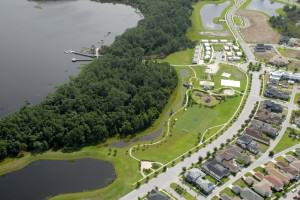
Whether you are buying a new home, designing a conservation development, or evaluating a proposed conservation development as a city/county regulator, what issues should you be aware of that impact the long-term functionality of a neighborhood? Is the design and management of the development going to conserve natural resources over the long term? What to look for? What key questions to ask?
To help evaluate the potential “functionality” of a conservation development in both the short- and long-term, I post below four key questions to consider. Use them to start a conversation about the conservation design and management of a proposed conservation development. The questions below address home, yard, and neighborhood issues.
Question #1: What kinds of tree protection and natural area conservation strategies have been employed?
When driving through a conservation development—either before or after the homes are built—you may see lots of vegetation: designated natural areas (meadows, wetlands, and forested areas) and large trees left on individual lots. However, the way trees and whole natural areas were designated and managed during the construction process is critical for their long-term health.
For trees, it is vitally important that their root systems be protected from damage during the construction process. Tree roots absorb oxygen, water, and nutrients for survival. Find out if fencing was used to prevent heavy vehicles, from damaging trunks and running over the root zone causing soil compaction. Compaction smothers roots and prevents them from absorbing essential nutrients. Ask or see for yourself how much of the area around the tree was protected. It’s not enough just to place a fence or flagging around the trunk of the tree. The roots underneath the drip line (the outer edge of the leafy canopy) should be protected by a sturdy fence. You may wind up dealing with the expensive problem of cutting down a dying tree near your house, a tree that was actually killed during construction. It just took several years to see the full effect bad practices had on it.
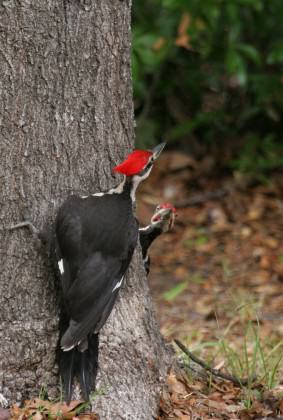
The single best factor that will help ensure the survival of a protected tree is irrigation. Stressed trees need plenty of water during the construction process and this means watering each tree to a soil depth of 30 cm about 2–3 times per week, depending on local site conditions.
With regards to designated natural areas, what kinds of management strategies have been implemented, both during the construction phase and post-construction? At a minimum—as required by law in most U.S. states — there should be well-maintained silt fences around any wetlands or water bodies to prevent silt from entering these areas during construction. Run-off can carry vast amounts of silt and other pollutants into a wetland and essentially choke this system to death. Well-maintained is the operative word here. Check around the construction site. Are silt fences properly placed? Have any fallen down?
Wetlands and small ponds without buffers, where lawn is right up to their margins, can cause a decline in water quality. Usually lawns are managed with fertilizers, pesticides, and herbicides, and without a buffer between the lawn and the water body, these chemicals can drain right into the water.
Take a close look at the “natural” areas. Do they look natural? The protected areas may be heavily infested with invasive exotics, such as Chinese Tallow trees, and may even be dominated by exotic/ornamental vegetation such as old fruit trees. A conscientious developer could implement some kind of restoration plan to remove exotic vegetation, with a long-term strategy to prevent re-invasion.
In more natural remnants, trails meant to be used by residents should be placed in areas to minimize disturbance of wildlife; for example, along the edges of natural areas and not crisscrossing through the middle.
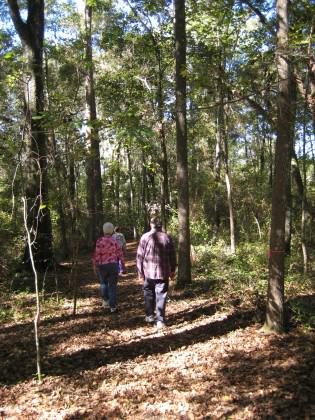
A subdivision with protected natural areas must have a management/educational program for the entire community that addresses the boundaries between natural and human-dominated areas. The health of these natural areas is intricately tied to the behaviors of nearby residents. For instance, residents should not take all-terrain vehicles (ATVs) into natural areas as this would disturb local plants and animals. In a conservation development, developers need to install some sort of visible educational program that addresses how local neighborhood actions affect natural areas (see question 2, below). In particular, is there a funding mechanism in place to implement and maintain the management/educational program?
For example, the control of invasive exotic plants, prescribed burns (where required), and other management practices take money to implement. Even the upkeep of an educational program (signs, web site, etc.) takes money to keep it going. Funds can come from a portion of lot sales, homeowner association dues, and from a portion of density bonuses a developer may have received by doing a conservation development.
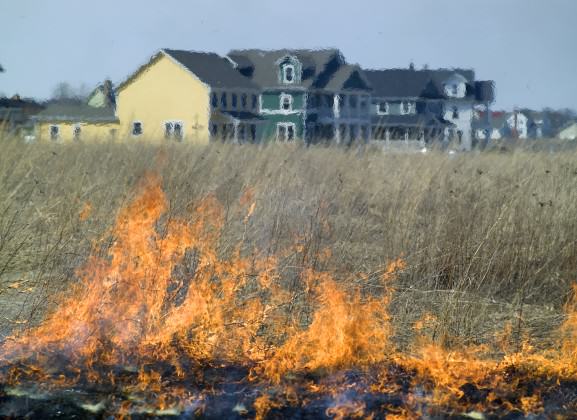
Question #2: Is there a long-term environmental education program for residents in the conservation development?
Homeowner understanding and buy-in are essential if the community is to function as originally intended. Although it is the developer who originally built the conservation development, it is up to the community residents to manage and maintain the conservation design in the built and conserved areas.
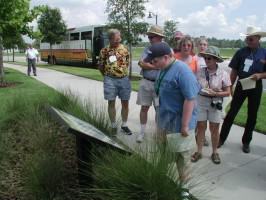
As an example, consider the effect if a homeowner added new plants to her/his garden and her/his choice included some invasive exotics. That choice would have an impact on nearby natural areas. The invasive plants could spread into those natural areas and have a negative impact on wildlife and native plants. Property owners need to know which plants are considered invasive exotics and avoid planting them in their yards. They also need to know how to remove any invasives that might currently occur in their yards.
Initial design is fine, but management is key! Neighborhoods turn over: houses are sold all the time, experienced owners leave, and new owners arrive, unfamiliar with the goals of a conservation development. All residents must be on board in terms of understanding the goals of conservation development and actions that help conserve natural resources.
One way to get the word out is for the developer to set up an educational package that consists of a website and kiosks. The elements help inform residents in the following way:
- Interpretive Kiosks: Highly visible interpretive kiosks/signs are placed in public areas where people traffic is high (such as sidewalks) or on a trail system in conserved areas. Each of the signs contains informative displays that discuss a particular topic, such as water, energy, or wildlife. Kiosks should be dynamic, with different informative panels being inserted throughout the year.
- Web site: Because the kiosks/signs can give only limited information, an associated Web site is constructed that gives detailed environmental information and management strategies pertinent to a community.
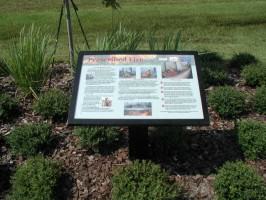
For an example of a community that has both an environmental education package and website, visit here.
Question #3: Do the Covenants, Codes, and Restrictions (CC&Rs) address any environmental issues?
Most master planned communities in the USA have Covenants, Codes, and Restrictions (CC&Rs) which act as guidelines to how the community is managed. These help set the flavor and tone of the neighborhood and the CCRs are sometimes attached to the deed of the house. If the community has a homeowner association (HOA), it usually has the power to enforce the CC&Rs. Thus it behooves a homebuyer to understand what the CC&Rs regulate—especially if they don’t encourage sustainable practices.
There are several things to look out for: first and foremost, is there language within the document that could prohibit sustainable practices? For example, the CC&R document could stipulate that the front yard has to consist of 80% lawn. If you (as the homeowner) decide to convert the lawn to more native landscaping, you would not be able to do so without penalty.
On the other hand, if the CC&R document contains information about conservation design and management practices, it can promote good environmental stewardship and conservation of wildlife habitat. Some examples of this include:
- prohibitions against planting invasive exotic plants (and definitions of what “invasive exotic” means)
- recommendations about pet care and wildlife (e.g., rules against free-roaming pets)
- no rules against keeping dead trees (i.e., snags) in place; these are beneficial to woodpeckers and other wildlife species
- requirements to landscape with native plants and a list of native plants
Take a close look at the wording and intent of the document; it should state somewhere that one goal of the conservation development is to conserve natural resources. See University of Florida’s EDIS document for an example of a CCR that addresses some environmental issues for a town in Florida. Also see this example of greening your CC&Rs from the Idaho chapter of the U.S. Green Building Council.
Question #4: What types of plants are used for landscaping within the conservation development?
The plant palette is the selection of plants that a landscape architect (hired by the developer) installs around homes and in shared spaces such as medians and parks. If the developer provides you with a list of plants, the first question to ask is “Which of these plants are native to the area?” Using native plants—naturally adapted to local climate and soil conditions—saves water and energy. Typically, native plants (once established) do not require the water, fertilizers, pesticides, and herbicides that some non-native species need. When these chemicals are applied to yards, they can run off into nearby conserved areas due to rain events and irrigation. Such pollutants entering conserved areas can have a multitude of negative impacts (e.g., algal blooms and fish kills in nearby waterbodies).
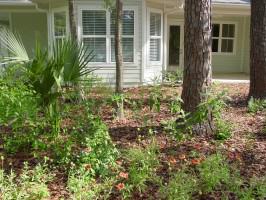
The next questions to ask are “How much of the yard is planted with turf grass? What type of turfgrass is used?” If 50% or more of each yard is lawn, the community collectively will consume a good deal of water, pesticides, fertilizers, and herbicides when taking care of those lawns. Each yard does not have to be entirely devoid of grass—we do need a place to gather and perhaps grill outdoors—but it should be much reduced. It’s also important to know what type of turf was used. Some species or hybrids of grass require much less water and fertilizer in their upkeep. Some examples of grasses suitable for the South are: Bahia grass, Centipede grass, and Zoysia grass. All have excellent drought tolerance and go dormant during dry periods.
The landscaper should have a good knowledge of which plants work the best in your locality. Ask her/him about why she/he chose certain plants and how they were planted. Do not be hesitant in finding answers not only about what was planted but also how it was planted. Many mistakes can be made in planting shrubs and trees. This is important because years (or even only months) down the road, you may be dealing with dead and dying trees, shrubs, and other plants that were not installed properly in the first place!
Summary
In order to have a functional conservation development, both the built areas and the conserved areas should be designed and managed together and be compatible with each other. Often in conservation developments, not much thought goes into designing the built areas so that there are minimal impacts on the conserved natural areas. Holistic management of the entire site is critical and engaging residents about conservation goals for the community is essential in order to maintain the biological integrity of the site over the long term. To learn more, I recently published a book titled, The Green Leap: A Primer for Conserving Biodiversity in Subdivision Development (University of California Press). This book contains a host of strategies and case studies to create model conservation developments.
For built environment professional that want to learn more about conserving biodiversity in subdivision development – and obtain CEU credits (Green Building Certification Institute [GBCI] 4 CE hours; American Institute of Architects AIA LU|HSW|SD 4 CE Hours) – a 4-hour online course is now available through the Green Building Institute. Four 60-minute PowerPoint modules have been recorded:
- Module 1: Key Players and Principles
- Module 2: Design
- Module 3: Construction
- Module 4: Post-construction
Participants in the course will have access and can download a 126-page course manual that includes specific details and resources that are presented in each of the PowerPoint presentations. For more information, contact Mark Hostetler.
Mark Hostetler
Gainesville, Florida USA
Editor’s note: this blog was also published as a Huffington Blog post.

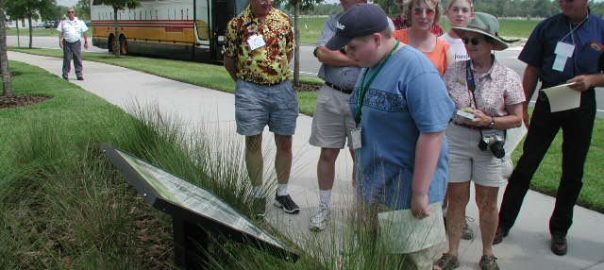






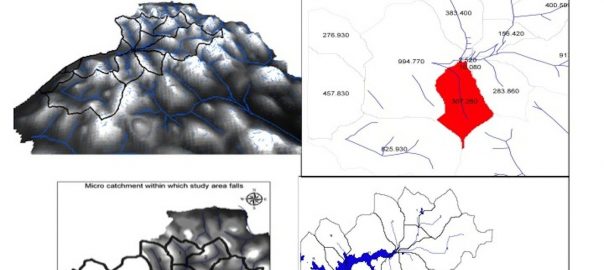

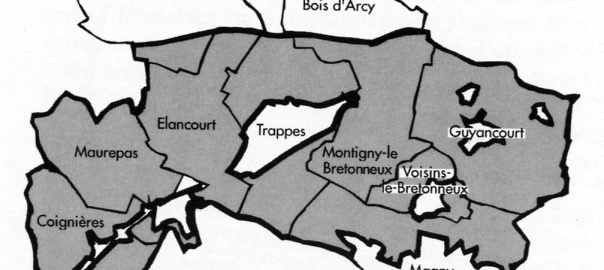
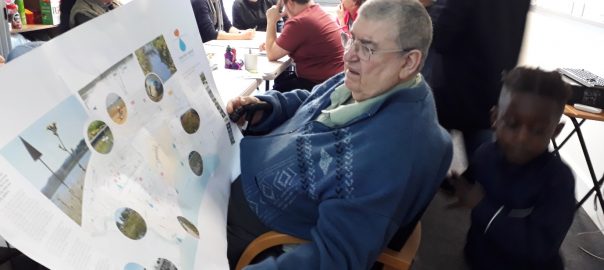
The natural resources need to be conserved .This can be achieved by establishing natural area conservation strategies.Thanks for the nice blog.